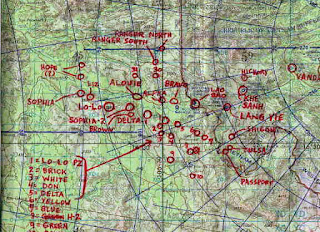Veterans Day 2016
Thanks to our military personnel both overseas and at home as
there is danger and sacrifice on both fronts. Thanks to you and your
families . . . to those in support of our men and women all over the world.
Take a few moments and remember what principles founded this
country . . . “In God We Trust”
We seemed
to have moved away from those principles and slowly we are losing focus on what
has kept us a great Nation. I am super proud of being an American, but we fail our
veterans every day.
Veterans are a
symbol of what makes our nation great, and we must never forget all they have
done to ensure our freedom.
A remembrance
from a little known (American public) time in my life . . . Operation Lam Son 719
"The
operation was conceived in doubt and assailed by skepticism, preceded in
confusion."
Dr. Henry Kissinger speaking on Operation Lam Son 719
The following excerpt from Newsweek, 15 March 1971,
was more objective than most at the time:
“To the modern American cavalryman of the air, the plunge into
Laos has been something like an old-time charge on horseback: admirably heroic,
stunningly effective-and terribly costly. For four weeks now, American helicopter pilots
have flown through some of the heaviest flak in the history of the Indochinese
war. One-day alone last week, the Army
admitted to losing ten aircraft to the unexpectedly heavy North Vietnamese
ground fire, and there were reports from the field that the actual losses had
been much worse. As a result, the
customary bravado of the American chopper pilot was beginning to wear a bit
thin. "Two weeks ago," said
one gunship skipper, "I couldn't have told you how much time I had left to
serve in Vietnam. Now I know that I've
got 66 days to go, and I'm counting every one." Another flier added
anxiously: "The roles are reversed over there. In Vietnam, you have to hunt for the enemy. But in Laos, man, they hunt for you.”
Despite the risks, it was inevitable that U. S.
helicopters should be deeply involved in the Laotian campaign, for more than
any other artifact of war, the chopper has become the indelible symbol of the
Indochina conflict. Helicopter pilots were among the first Americans killed in
the war a decade ago, and, under President Nixon's Vietnamization program, they
will probably be among the last to leave. In the years between, the chopper's mobility
and firepower have added a radically new dimension to warfare, and the daring
young American pilots have scooped up their Silver Stars, Distinguished Flying
Crosses and Air Medals by the bushel-along with Purple Hearts. In the opinion of many military experts, the
helicopter has been the difference between a humiliating U. S. defeat in
Vietnam and whatever chance remains of attaining some more satisfactory
outcome.”
Lam Son 719 - JAN-MARCH 1971
Lam Son 719 was a major operation of the Army of the Republic
of South Vietnam, ARVN, into Laos from 30 Jan - 24 Mar 1971. U.S.
provided all of the aviation assets for this operation. A/101 AHB
"Comancheros" were one of the aviation units in this operation, along
with being the sole 101st Airborne aviation unit supporting the Special
Operations Group in I Corp during the month of February 1971.
The objective of Lam Son 719 was to disrupt an ongoing North
Vietnamese Army supply buildup at Tchepone, Laos. American Helicopter Units supported and
provided all transportation of ARVN troops/supplies into and out of Laos during
this operation. The US Helicopter
Crewman went against the heaviest anti-aircraft barrage incurred in the War.
The US helicopters that supported Lam Son 719 received fire
from rocket propelled grenades, enemy tanks, mortars and small arms fire. The US helicopters were regularly opposed by
NVA 23mm, 37mm, and 57mm anti-aircraft weapons along with .51 caliber machine
guns arranged to provide mutually supporting anti-aircraft fire. The enemy opposition comprised a permanent
logistical force of engineers, transportation, and anti-aircraft troops,
together with elements of five divisions that included 12 North Vietnamese
infantry regiments, a NVA tank regiment, an NVA artillery regiment, and 19 NVA
anti-aircraft battalions.
The South Vietnamese government claimed that 13,341 NVA had
been killed against 5,000 ARVN KIA/WIA. American
estimates put the ARVN losses at 10,000 which amounted to half of ARVN forces
committed to the operation.
The losses to US Helicopter Forces were 65 Helicopter Crewmen
KIA, 818 WIA, and 42 MIA. 618 US Helicopters were damaged, including 106
totally destroyed, from 30 Jan - 24 Mar 1971.
All Gave some . . . Some Gave All





Comments
Cheers!
Russ